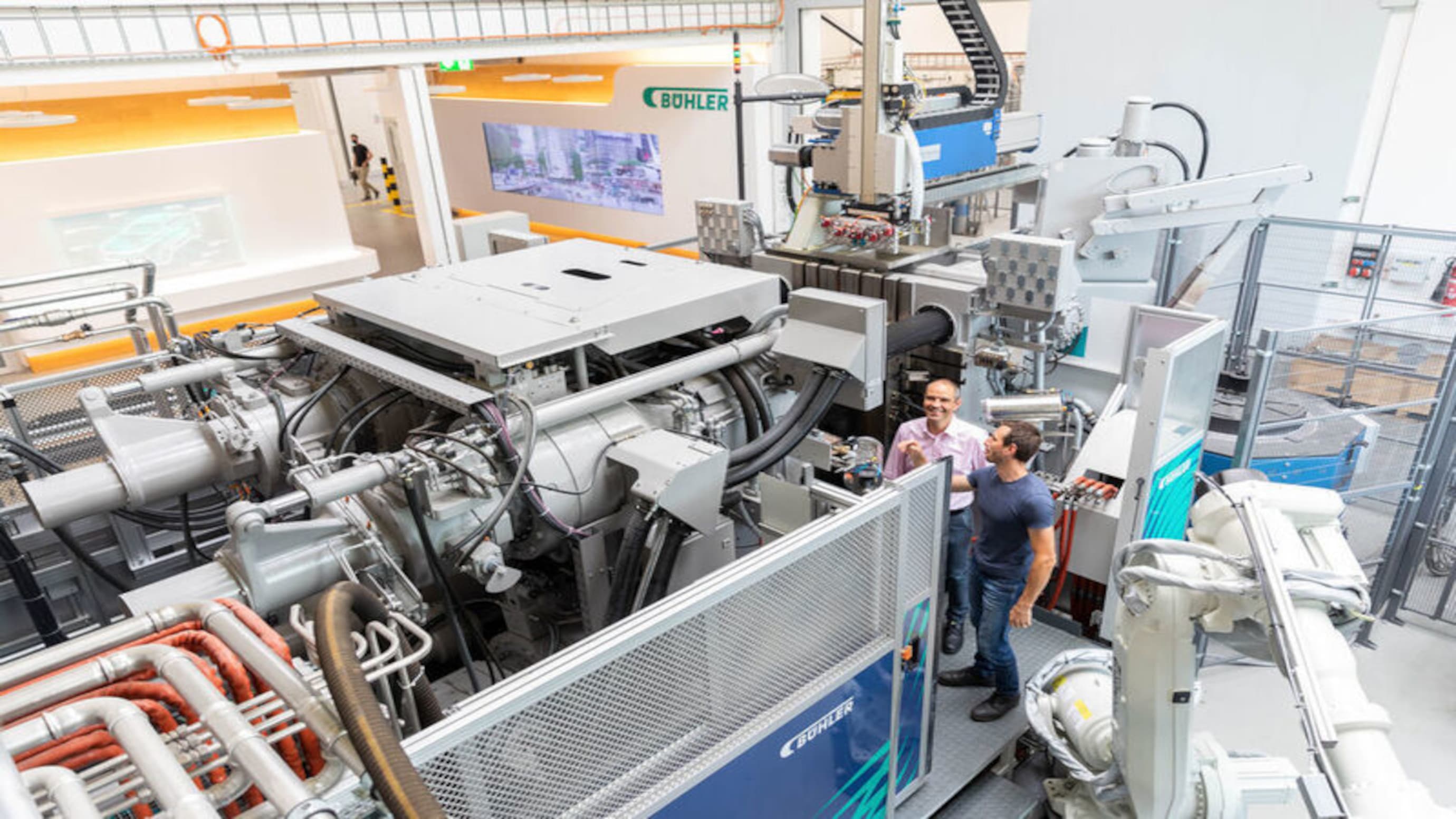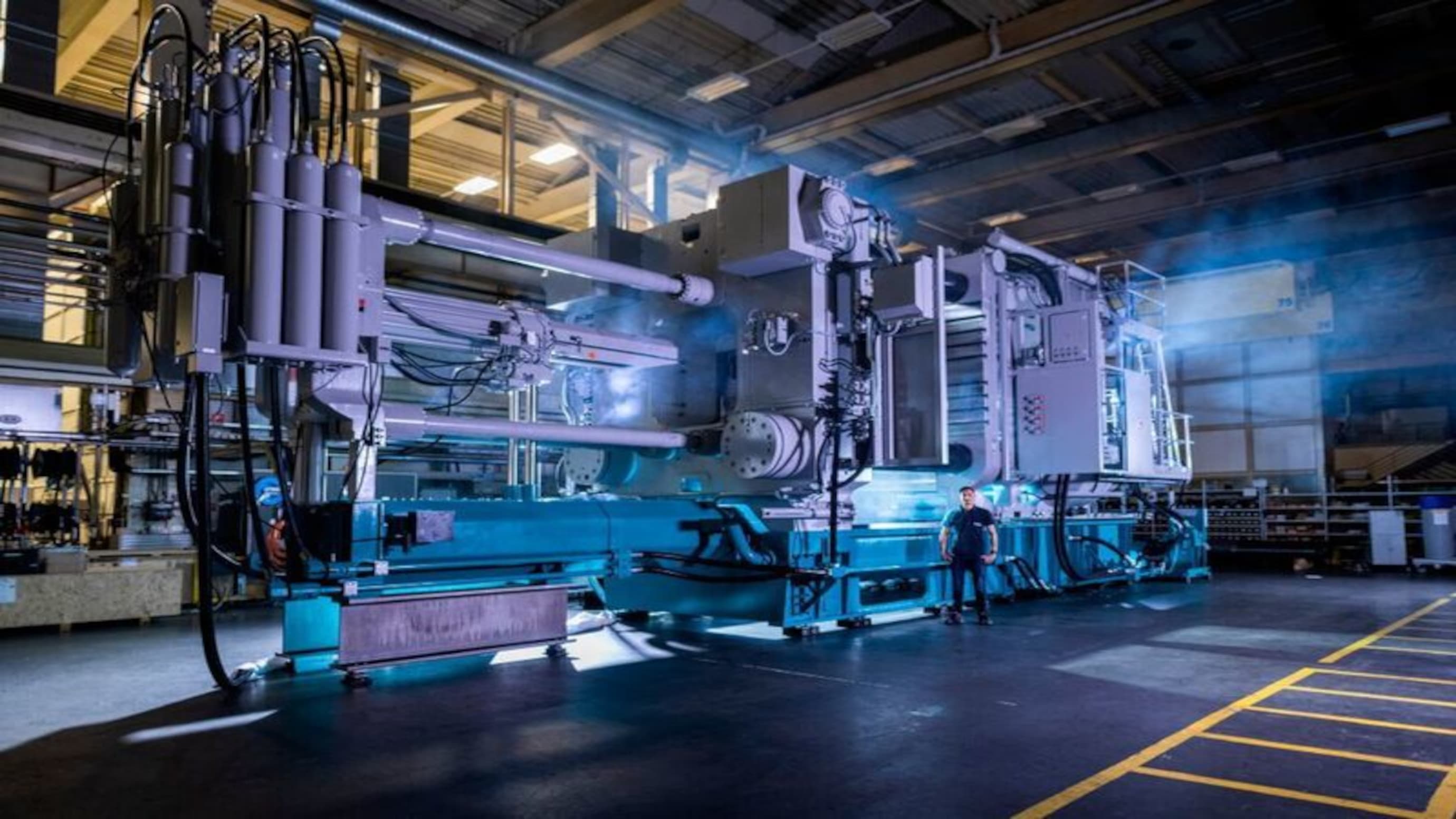- 07/14/2021
- Interview
- Transformation of the drives
"Larger and Intelligent Solutions are Transforming Die Casting"
In this interview, Cornel Mendler, the new Managing Director of Bühler Die Casting, says that larger and intelligent die casting solutions are the drivers in the industry. He sees mobility transformation, digitalization and sustainability as a key focus in the years ahead.

As a new Managing Director with a fresh perspective of the die casting industry, what do you see as the big market trends for the industry?
Cornel Mendler: I see three major forces shaping the industry: Mobility transformation, digitalization and sustainability.
In mobility transformation, future body-in-white concepts are the hot topic for automotive manufacturers, driven by discussions around production savings and complexity reduction. Larger body-in-white parts – such as an entire rear or front underbody – can mean one piece replaces as many as 70 components. This does away with numerous assembly processes, can cut hundreds of robots from the production lines and reduce the factory footprint by as much as 30 %.
At Bühler, we have seen an explosion in enquiries for projects and concept studies from this sector around the globe. This needs larger machines, like our Carat series, with up to 84,000 kN locking force and the ability to handle physically larger parts.
Of course, the move towards electric mobility is changing the demand for other parts in electric vehicles, like complex electronic components, which require high quality and tight tolerances. This is fueling new orders for smaller machines with under 20,000 kN locking force, such as our Fusion, Evolution and Ecoline series.
We also know that increased digitalization can significantly improve efficiency and profitability for our customers and reduce environmental impact. Our vision of the Digital Cell focuses on that. We’re working with customers and suppliers towards 0 % scrap, a 40 % reduction in cycle time and 24/7 uptime. Digitalization unlocks this. Every step our customers take towards more connected, automated foundries is a step towards significant cost-savings. And more sustainable production too.
Finally, sustainability is a topic that concerns me. Bühler Group has ambitious goals. Working together with partners, customers and suppliers, we aim to reduce energy, waste and water consumption in our customer’s value chains by 50 % by 2030.
As well as Bühler’s vision and responding to the trend towards larger machines, is there anything more you will be focusing on?
I want us to get even closer to our customers, so we can help them bring about change as smoothly and efficiently as possible.
For example, with larger machines, the foundry may require a new layout, different robots and new part-handling processes. The skilled teams in our three hubs, China, Europe and the US draw on over 90 years of experience in the die casting industry. Working together with customers to plan and implement every detail of the cell as a complete solution for each specific use is the key to success.
Do you have a plan for how Bühler will operate around the world?
Of course. We are already able to produce these large machines with 56,000, 61,000 and up to 84,000 kN locking force in China & Europe. US production above 44,0000 kN locking force will be available soon, completing our global commitment.
Our service teams do a fantastic job around the world, helping customers to maximize the output of their investment across the entire lifecycle of our equipment, from installation, and maintenance, to the introduction of new tools, like myBühler.
One of the first visits I made on becoming Managing Director was toour remanufacturing plant in Bedizzole, Italy. It was great to see how their upgrades and revisions give older customer machines (like our B-, SC- and Evolution series) a second lease of life. In addition the team is working on a plan to extend the lifetime of our Carat machines. The first Carat machines have been hard at work for almost 15 years now, so the plant is ramping up to extend the lifetime of these solutions too.
You take over responsibility for a business operating in an industry that was hit hard by the global pandemic. How do you find it right now?
The outlook is better than I expected. We see the rebound coming stronger and faster than we thought, so we are rather optimistic. The automotive industry is recovering fast, and although currently restrained by the shortage in chip manufacturing, the appetite for investment in innovation, efficiency and sustainability is encouraging.
I’m also glad that I can now travel again. Visiting customers and understanding their ambitions and challenges is what drives all of our development here. It’s an exciting time to be in charge of a global force in die casting and I look forward to playing my part in shaping the industry’s future.
Thank you very much, Mr. Mendler.
* This interview is sponsored by Bühler Group.



